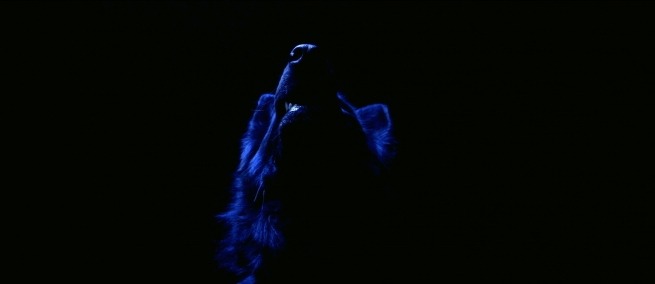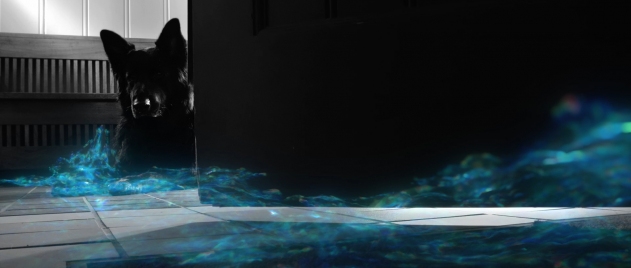
A domestic dog’s life can be fairly predictable. Paul Jason Hoffman and Christian Chapman’s new five-minute short DOG IN THE WOODS explores what the wild side of a dog’s existence outside of the house looks like. DOG IN THE WOODS stars Alice, a black, inquisitive canine whose monochrome reality is electrified when she escapes into the forest. The directors simulate a dog’s point of view—governed primarily by smell—by choosing select visual effects, sound effects, and a limited color palette. We corresponded via email with Hoffman and Chapman about these choices the week that DOG IN THE WOODS made its online premiere. As of June 4, the film is available to stream on the platforms NoBudge, Vimeo Eye Candy, and Booooooom.tv.

Regarding the film’s visual effects, “there was so much to play with here,” the directors wrote. “A trail of scent emanating from a wounded deer, a bed of flowers emitting pheromones on a midsummer night, the sound of an owl soaring far overhead—stimuli that aren’t perceived by humans. We’re a sight-based species. Therefore, our main task was to translate the dog’s high-powered perception of smells and sounds into visuals. We compiled a huge folder of scientific reference images—microscope slides of plant matter, deer sinews, milky ways, etc.—and created illustrations that merged our favorite aspects of these images found in nature. Finally, we collaborated with a talented group of visual effects freelancers all across the globe to bring our drawings and Photoshop renderings to life.” Alice’s world was created by a team including award-winning artists Marc Zimmermann and Andy Thomas.
When choosing how to create the soundscape that Alice hears, Hoffman and Chapman working with sound designer Cody Troyer considered what ordinary household sounds could come together to feel unbearable. The background noises that most people take for granted are loud and grating in the beginning DOG IN THE WOODS. “We imagined that dogs might hone in on certain sounds that humans would otherwise ignore—water running through the plumbing system, electrical buzzing from a telephone line, the barely audible furnace in the basement. Not only did we think that dogs might focus on seemingly mundane sounds; we also thought dogs would hear these sounds very differently than humans do. We recorded lots of foley—tea kettles boiling, toilets flushing, the garbage disposal churning away—and tweaked the speed, pitch, and other effects to turn these nondescript sounds into a cacophonous hell from which Alice must escape.”

Dogs see fewer colors than humans, but they don’t only see in black-and-white. Hoffman, Chapman, and colorist Oliver Eid manipulate color in the film to emphasize contrast between Alice’s domestic life and “the ‘call of the wild’ that must be so present in the canine brain,” as Hoffman and Chapman wrote. They continued, “canine instincts are much less suppressed than our own, and their senses of hearing and smell are exponentially more powerful—so it was exciting to imagine how unnatural an indoor environment might be feel, and how supernatural the forest might feel to them. We depicted the house interior with harsh lighting and crushed shadows, entirely black and white. The outdoors were the complete opposite—soft lighting and hyper-saturated colors—beckoning an adventure.”
DOG IN THE WOODS made its world premiere at the 2019 Slamdance Film Festival and is now available to watch on online platforms including NoBudge. The film is Christian Chapman and Paul Jason Hoffman’s first narrative film. Together they directed the 2014 feature documentary LA SELVA TRANQUILA and founded the multimedia Rebirth Arts Festival in 2016. The team wrote, directed, produced, filmed, and edited DOG IN THE WOODS.
TOPICS